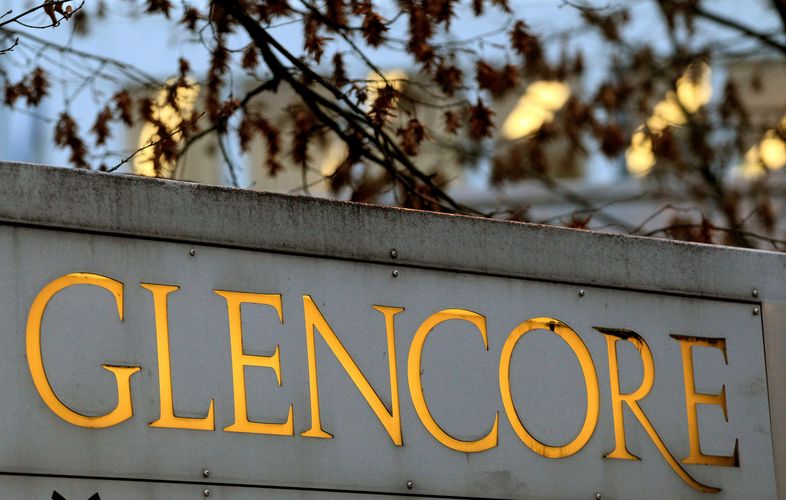Just 18 months ago, many investors were reading Glencore the last rites. But the Anglo-Swiss trader has bounced back, slashing debt and selling assets and, now, embarking on another M&A spree. But has it learned from past mistakes?
The philosopher George Santayana once observed that those who cannot remember the past are condemned to repeat their mistakes. It is a common lament in the business world, where institutional memories can be short, and mistakes too easily forgotten or brushed under the carpet.
But not every firm is incapable of learning from the past - and using that knowledge to chart a path to the future.
Take Glencore. The Anglo-Swiss commodity trader has emerged from a torrid period in which its stock tanked and investors questioned its very future. The recent rout in global commodity prices did not help; nor did the firm’s ballooning debt.
Yet survive it did, its London-listed shares bouncing back from a low of 70p in January 2016 to a shade under 300p today. Over the past year, it has twice visited the debt markets, wowing investors with a €1bn September 2016 euro print that generated €5.8bn in demand and which was swapped into dollars, then perturbing them when a US$1bn sale in March 2017 left the books less than twice covered. Two months later, it was back, refinancing an existing US$7.7bn one-year revolver.
Glencore knows how close it came to being wiped out by a mix of poor market conditions, aggressive short-sellers and a debt-fuelled M&A spree that culminated in 2013 with a protracted takeover of Xstrata. And it is determined not to make the same mistakes again.
Three clear messages stand out from the assessment of the company’s recent past and future plans by its co-head of corporate finance, Carlos Perezagua.
First, that the firm’s liabilities are under control. A debt reduction plan launched in September 2015 involved selling assets and briefly scrapping dividends, the aim being to restore confidence in the firm’s balance sheet.
Glencore raised US$10bn from the sale of non-core assets, including an Australian coal-haulage railway and a half stake in its agricultural division to two Canadian pension funds. Investors were further heartened by plans to buy back up to US$1.25bn in bonds maturing in 2018 and 2019.
Great pains were taken to hammer home its new-found financial rectitude.
“In 2015 when our bonds were at elevated spread levels, we bought back around US$650m,” said Perezagua. “In addition, in 2016, we launched two liability management exercises to reduce the amount of bonds maturing in any year to around US$3bn, from US$4bn-$5bn previously.
The firm launched an aggressive marketing campaign, engaging equally, said Perezagua, with “all stakeholders, including credit investors, spending similar amounts of time with debt and equity investors, as there are a lot of investor flows between these two parties”.
He added: “Even during the recent low point in commodities, which was January 2016 when prices collapsed on China concerns, we were free cashflow positive, [generating] around US$3bn per year.”
Medicine working
So far, it has worked. Net debt fell to US$15bn at the end of 2016, from a high the previous year of nearly $30bn.
“The debt reduction programme is complete,” said Perezagua. “Glencore is more than 40 years old and its balance sheet has never been in better state.”
It is reintroducing its dividend this year, paying out US$1bn to shareholders in two equal tranches.
At the heart of message number two - which revolves around future debt sales - is Glencore’s palpable determination to convince the market that it controls its own fate. With US$3.3bn-equivalent of bonds maturing in 2017 and US$3.4bn and US$2.8bn in 2018 and 2019, respectively, the trading giant is well aware that it will have to continue visiting the bond markets in search of ready cash.
But it couches this necessity in its own terms, focusing on the wider benefits of financing - both to itself and to future suppliers of fresh debt market capital.
“You will probably see us doing around US$2bn a year in bonds in order to maintain a liquid relationship with the market,” said Perezagua. “We don’t need to do anything, but we have around US$2.5bn in maturing bonds coming up in 2017, so we will probably print at some point. If the markets are there at sufficiently attractive levels we will print; if they aren’t, we won’t.”
And the message is constantly reinforced. With that US$3.3bn-equivalent of bonds yet to mature this year, Glencore will need to dip into its growing cash reserves, or pay the market another visit.
The third and final message points toward the firm’s future. Having rebuilt its financial foundations and convinced investors and bankers that it can be trusted, Glencore is again wading back into the M&A market.
Perezagua is quick to note the firm is “wedded” to a policy of fiscal conservatism that avoids revisiting past mistakes and leveraging its balance sheet up to the eyeballs. “We want to run a conservative balance sheet,” he said.
But that does not rule out a well-judged acquisition or two. Glencore has lost none of its ambition: it wants to become a truly global commodities trader, and there are large geostrategic holes in its portfolio, notably in Asia and the Americas.
That explains Glencore Agriculture’s informal approach to US agribusiness Bunge in May. While carefully couched - Glencore outlining the benefits of a “possible consensual business combination” - it had ‘takeover’ written all over it. Bankers said a deal would be a good one: a low-debt target big in Brazil and the US, snapped up by a now-fiscally-prudent buyer big everywhere else. In June, the trading giant also tendered a US$2.55bn bid for Rio Tinto’s coal assets in New South Wales, going head-to-head with a smaller Chinese rival, Yancoal.
So having whittled down its debt levels and regained the trust of its financial partners, Glencore is now looking to bulk up again by buying - though not at any cost. It says it has learned from past mistakes. But will that prevent it making new ones? Only time will tell.
To see the digital version of this special report, please click here
To purchase printed copies or a PDF of this report, please email gloria.balbastro@tr.com




